Make your own sticker remover using these recipes. Learn how to remove sticky residue the non-toxic, all-natural way and avoid harsh chemicals. These homemade adhesive removers WORK!
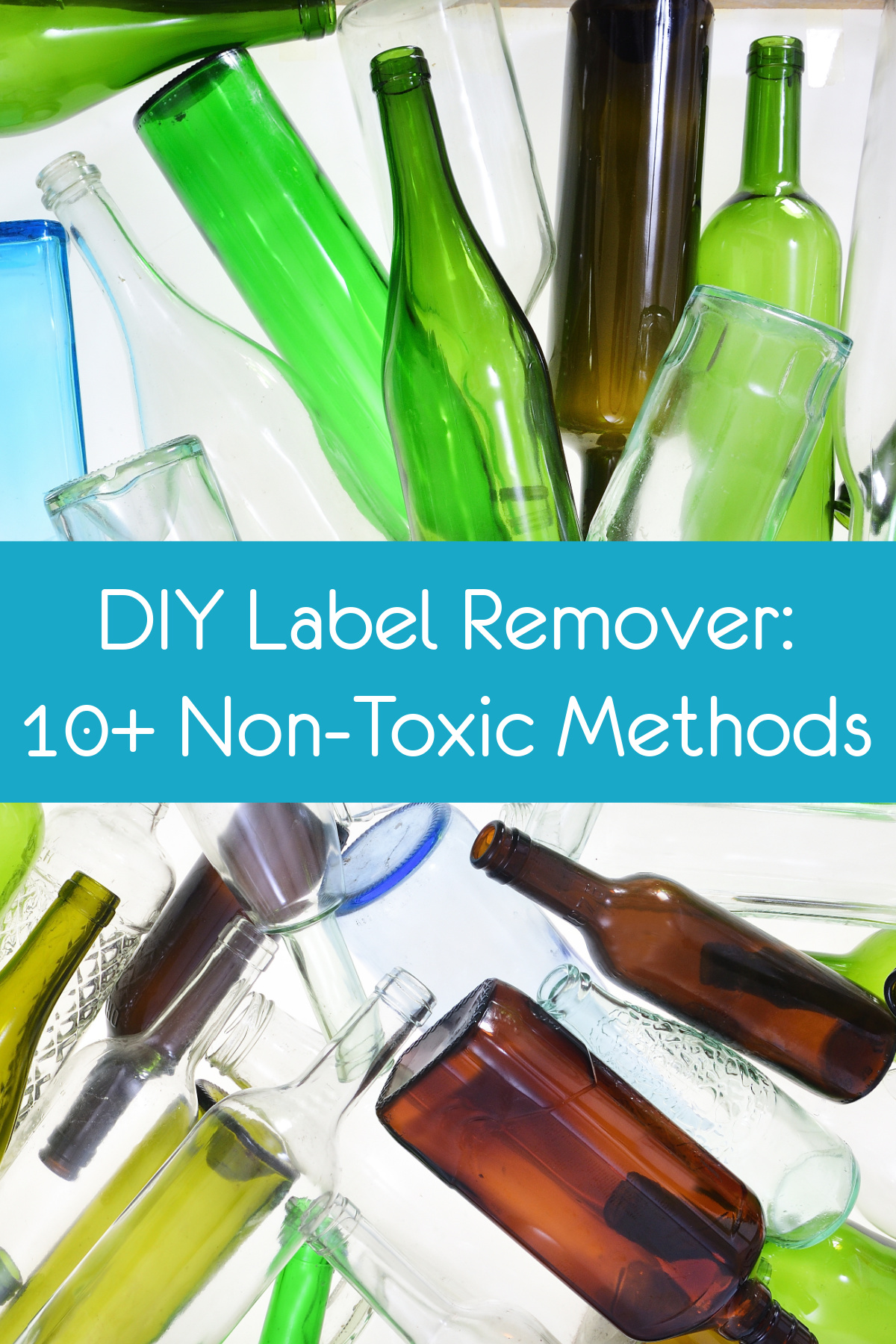
DIY Label Remover
I think we’ve all been in this position. You go to the craft store and pick out your surfaces (whether they be glass, ceramic, wood, etc) and place them in your basket.
You have all sorts of ideas for what you want to make, and can’t check out at the register and get home fast enough.
You’re ready to begin your first project so pick a glass jar out of the bag and remove the sticky residue and tag. Or at least try to.
You end up pick-pick-picking only to have the price tags partially rip off or leave sticky residue behind. That’s when it’s time for a DIY sticker remover.
How to Remove Sticker Residue
Before I get into the methods to get stickers off of glass, I wanted to go over a few questions I’ve gotten from readers. Remember that my focus is natural methods – let’s jump in!
Why Not Use Goo Gone?
I’m going to be honest, I have always used Goo Gone in the past and it has never bothered my skin or respiratory system. However, the material safety data sheet (MSDS) for the product lists the hazard statements as: “Combustible liquid. May cause an allergic skin reaction. May be fatal if swallowed and enters airways.”
Without getting too scientific, some people might not feel comfortable using Goo Gone, especially if they are in sensitive groups or are pregnant. In that case, it’s probably a good idea to consider a DIY sticker remover.
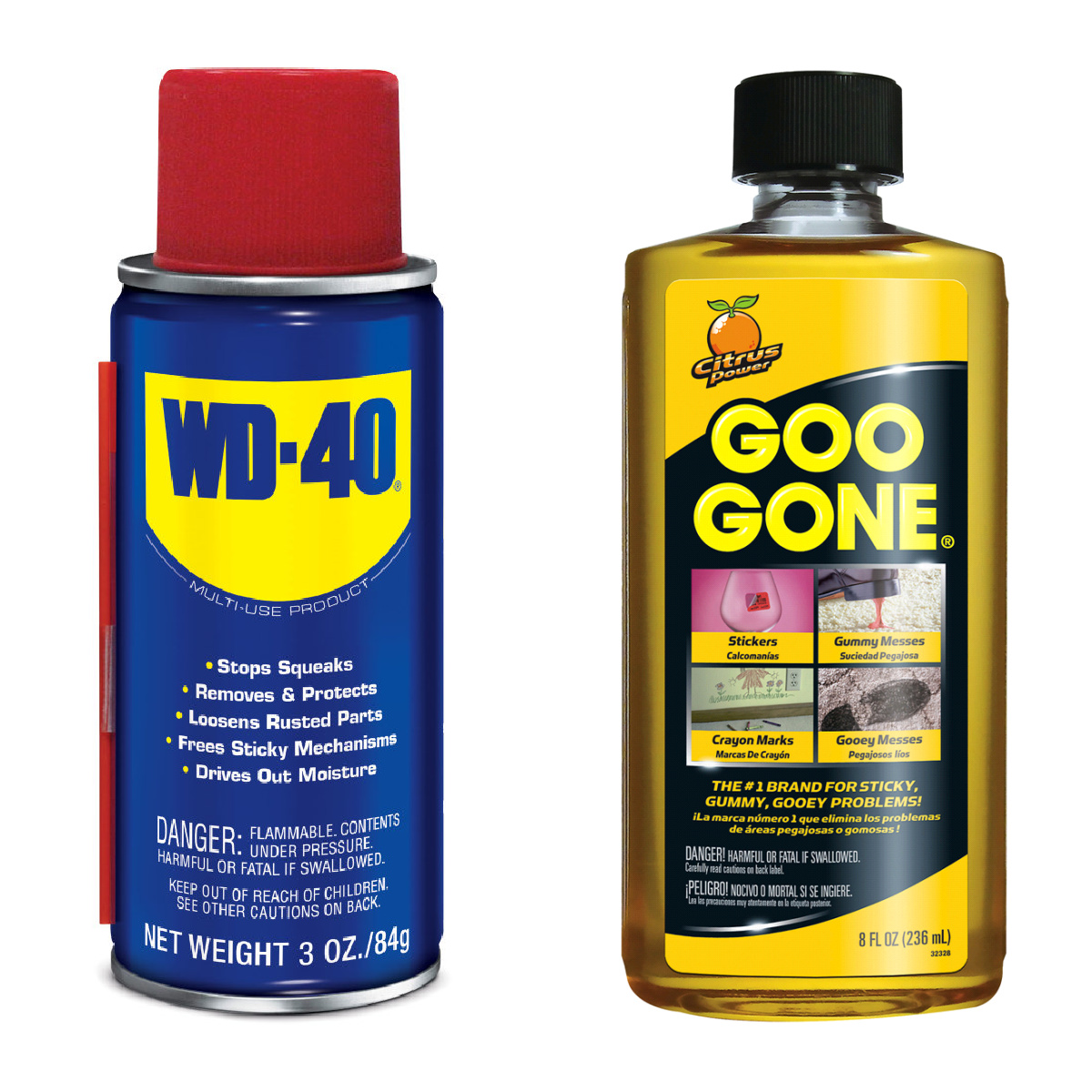
What About WD-40?
When I asked my Facebook group about their preferred methods for homemade adhesive remover, one of the suggestions was WD-40 (basically you’d use it the same way as Goo Gone). I did a little research and found the MSDS for that product as well.
The hazard statements are: “Harmful or fatal if swallowed. Combustible liquid. If swallowed, may be aspirated and cause lung damage. May cause eye irritation. Avoid eye contact. Use with adequate ventilation. Keep away from heat, sparks, and all other sources of ignition.”
So from first glance of the hazards listed, WD-40 is even more problematic than Goo Gone. If you aren’t in a sensitive group, you may want to consider WD-40, but otherwise I’d avoid it and stick with the natural DIY sticker removal methods below.
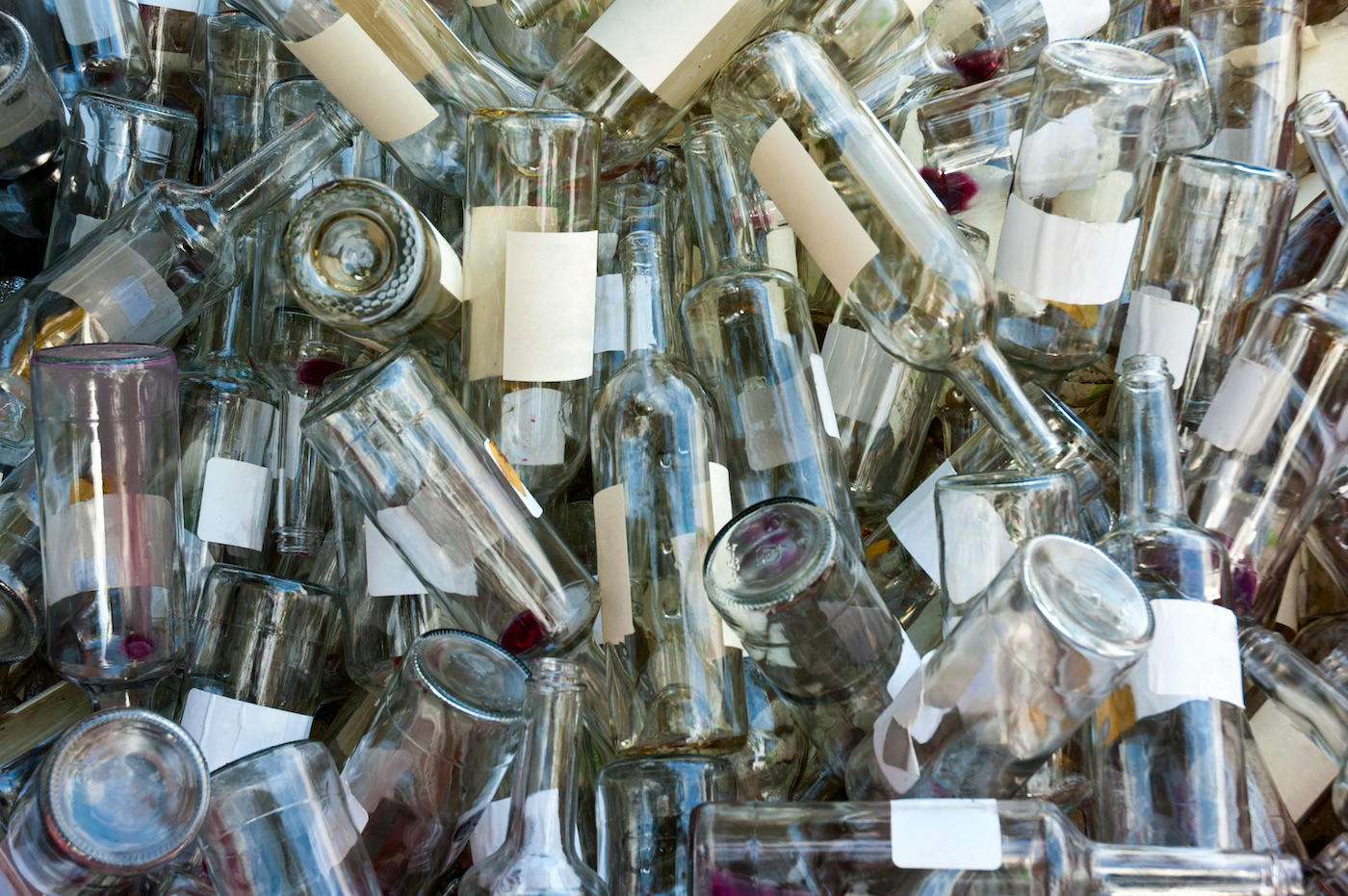
How to Remove Stickers from Glass
After surveying my audience for their favorite DIY sticker remover methods, I’m presenting them below in order of preference. You absolutely need to do a test first in an inconspicuous area to make sure that the products below won’t stain the surface. This is especially true for wood (and I wouldn’t recommend any soaking).
Note that the oil methods should be used sparingly on wood and especially fabric as they might leave stains (which doesn’t matter if you are painting the wood). Removing stickers from glass and ceramic is the easiest and usually doesn’t cause a problem.
I feel confident about this list of options for DIY sticker remover because those surveyed have USED them and proven that they work! The common thread in a lot of these DIY sticker removers is that there is an oil in them.
Tells me that there is something in oil that reacts positively with the adhesive in terms of its removal. Learn how to remove sticker residue below; these are in order of preference. Start with a small amount of any of these and add more if you need!
Mayonnaise
Remove as much of the label as possible. Spread mayonnaise over the remaining adhesive and let sit for ten minutes. Then scrape with a credit card.
Peanut Butter
You’ll use this the same way as the mayonnaise. This one seems to be really good on plastic surfaces.
Soak in Hot Water
You’ll want to either boil water or run really hot water from your tap. Place the item into the hot water and soak for at least overnight. Follow up with a scrubber pad. Do not use this method on wood!
Household Oil
Leave a household oil (coconut oil, olive oil, baby oil). on the label for a few minutes. Scrap off the existing residue. This works really well to remove sticker residue off glass.
DIY Goo Gone
You can made homemade Goo Gone using three ingredients. Stir together 1/4 cup baking soda, 1/8 cup vegetable oil, and 3 drops of citrus essential oils. Apply this Goo Gone alternative and let sit, then wash off. You can store in an airtight container with lid.
Hand Lotion
This seems to work the same way that the oils do. You’ll want to remove as much of the label as possible before trying this method.
Hair Spray
Spray on, leave to sit for a few minutes, and wipe off.
Rubbing Alcohol
Wet a paper towel or rag with rubbing alcohol and rub where the adhesive is. If the sticker is stubborn, lay an alcohol soaked rag on the area and let sit for several minutes.
Eucalyptus Oil
This works like the other household oils from #4.
Hair Dryer or Heat Gun
I’ve tried this homemade adhesive remover with a heat gun and I have to say, it works very well. All you’ll do is point the hair dryer or heat gun at the area with adhesive and – like you’d imagine – get it really hot. Rub the sticker residue off with a rag or your finger (but remember the surface is hot!).
Baking Soda and Coconut Oil Paste
Mix 1 tsp of each together in a small container and apply to the sticker residue. Leave it on for several minutes and then use a hard edge to scrape off the remaining residue.
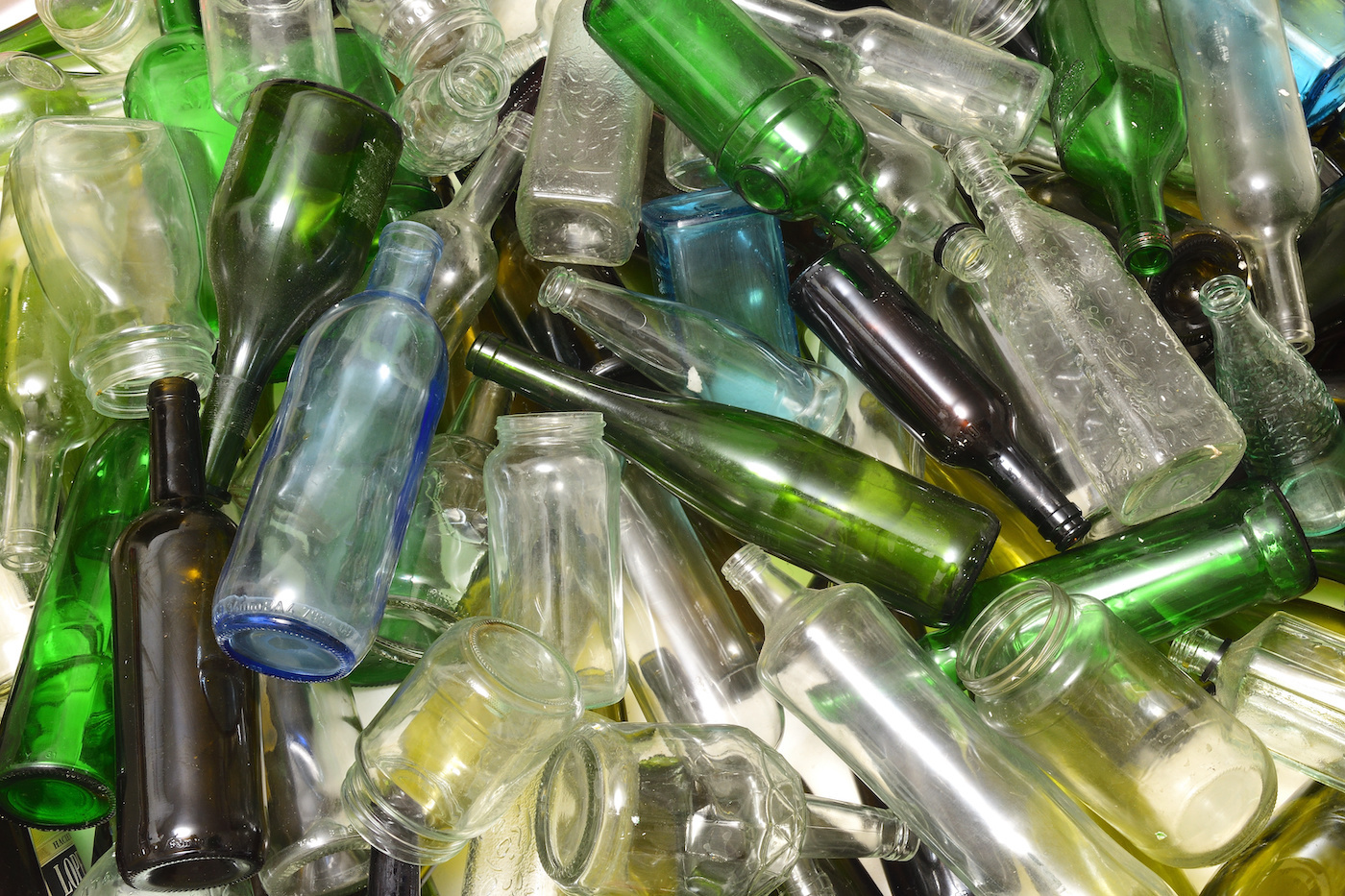
Note: several other label removal methods were suggested to me after this post was published. They are as follows:
- Exhaling on the label
- Placing in the freezer overnight
- Purell hand sanitizer
- Pure Citrus Air Freshener by Blue Magic or Real Citrus Air Freshener by OdoBan
- Bug spray
- Dish soap
- Butter
- Orange oil
- De-Solv-It – available overseas. This product is not expected to be a hazard to the environment, however it is extremely flammable
- Crafter’s Companion Stick Away – available in the UK. I can’t find an MSDS on this product.
- Un-Du Adhesive Remover (Goo Gone alternative)
- Pumice powder
- Skin So Soft – the Avon product
- Wallpaper remover – while it is not a hazard to the environment, it is flammable and could generate vapors
- Lighter fluid. Lighter fluid is toxic to aquatic life so I don’t personally feel comfortable washing it down the drain
Have you tried any label remover methods that you use regularly? What about homemade Goo Gone? I’d love to know how you remove sticker residue in the comments! I’d also love for you to check out these other crafting tips here on the blog:



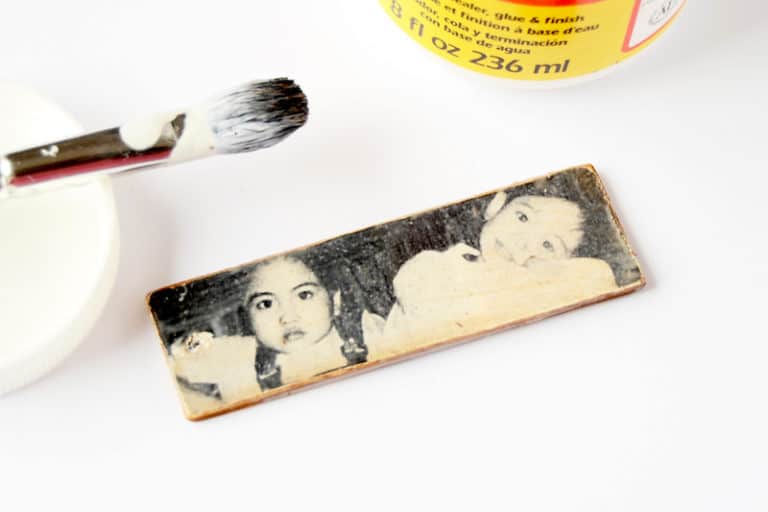

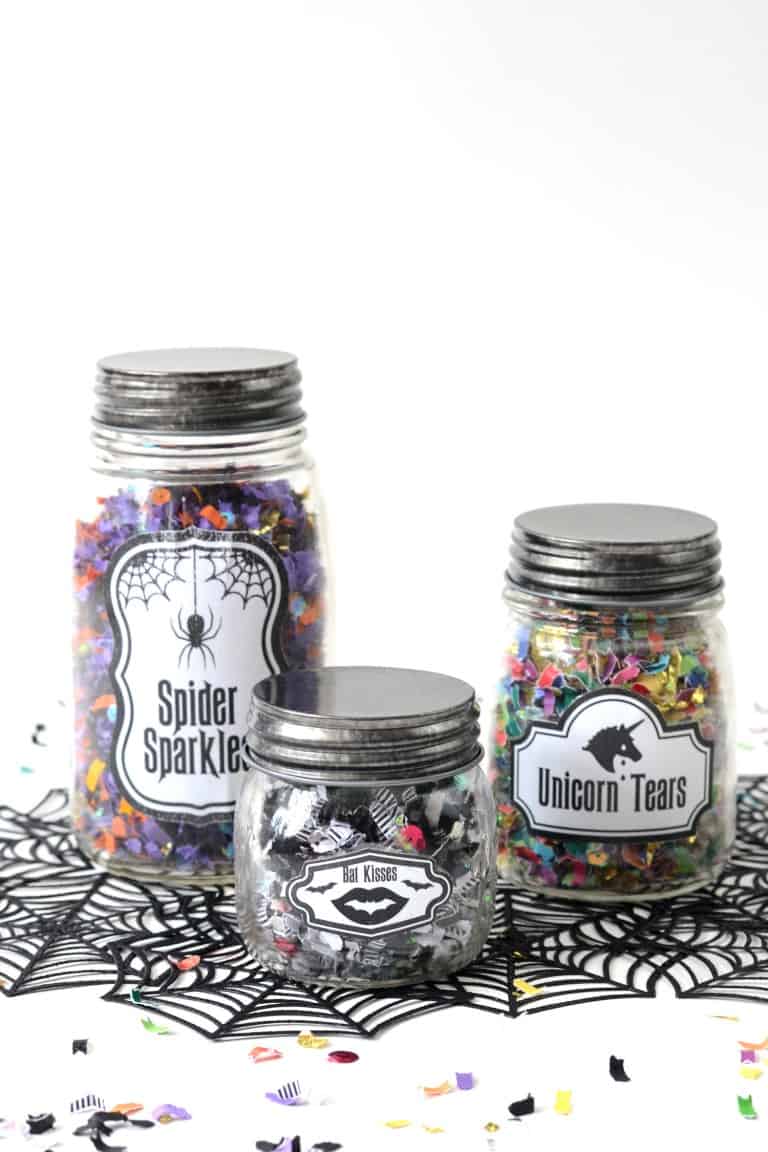

After seeing the recommendation to use a hair dryer knowing that it was heat that softened the adhesive, I tried my own method of creating heat – I loosened a corner of the label, then I exhaled right down on the exposed adhesive, and continued to slowly peel back the label and exhaled every time I revealed another part of the label, directing my breath right at the contact point. It was an amazing find. Nothing toxic, always at hand,
Patricia I love that!! Nothing better than using something you already have in your back pocket ;D
Purell hand sanitizer works better than rubbing alcohol. Spread over adhesive and leave for a few minutes. Then scrape with a credit card or other sharp edged item.
Peggy – thank you for the input! I’m making notes to update the article after about a week or so based on the comments 😀
I would like to get their adhesive so I could make my own labels invinceable! I would like a dishwater safe costing for my crafts. Or maybe I should try painting on glass. However I think it can be done with labels as I have a horrible time getting labbels off syrup and pickles …anything with a free pretty jar…for my crafts… I scrape and peel and soak and try everything and still have left on glue….Also theirs is so even and clear……Spagetti jars have real tough glued on labels. And such a nice size I hate to spend my craft time on cleaning and scarping jar glue.
I often have luck just laying the item in the sink and cover the label with dish soap. Let it sit a bit and usually comes off easily. I wish there was a way to remove a sticker on something you don’t want to get wet? Have tried a hair dryer but not too good of results.
I have had great success with the product Scrapper’s Solution Undu. You can use it to remove stickers in scrapbooking and are able to reuse the sticker. I also love having a razor blade to remove residue from jars. I also found a pumice powder to remove a filmy residue on a bathroom mirror. I had tried everything: alcohol, window cleaner, and even the steam mop. The pumice powder did an excellent job!
Thanks for all these suggestions. I usually use Goo Gone, but I’m going to give baby oil and heat a try. Much appreciated!
I use hand sanitizer. It’s great! I also use it for removing stuck on grease like on a stove top, removing soap scum and just about any “gunk”. But, don’t use the type that have those tiny beads in them. They can scratch some surfaces.
Hi Kat, ooh I will definitely give that a try, thank you!!!
Hi, great article thank you and I will definitely try the food choices. I always use lighter fluid and you’ll find there isn’t anything to wash away if you clean the glue off with a paper towel because the lighter fuel actually evaporastes. It works really well 99.99 percent of the time. I’ve tried rubbing alcohol and it’s not nearly as good and if the item is plastic it may even damage it! The very hot water option also damages plastics and depending on the glue in some cases it becomes even stickier. So, except for the mayo, peanut butter, oils & hairspray I think I’ve tried all the others and lighter fluid is the way to go hands down. I am really hoping the hairspray or even better the food choices work as I would be willing to forfeit the lighter fluid if they do! Have a great day 😉
Using either GooGone or WD40 is all you need. Wet an old rag, or sponge in hot water and then add your preferred product place the rag on the label and let soak a few minutes, you may not even need to scrape off. I’ve been doing this for almost 20 years so I can reuse the glass jars candles come in. It always works beautifully.
sherry
Hi Sherry! Yes these work well but are not an option for all people – some are in sensitive groups, or just don’t want to use something that’s got any hazards.
You know when you go to church and you are just sure the preacher’s sermon is just for you, so timely, well, that’s how I feel about this post. I am working with a lot of projects right now that all seem to have tape or stickers. As with a lot of you, I hate to use GooGone. I’m anxious,to try these methods. Thank you, thank you!
Dear Amy,
Thank you so much for all that you do to make Mod Podge crafting so much
fun and so interesting too.
From my friend June came this time saver for me in removing the sticky adhesive
left behind.
Pure Citrus Air Freshener by Blue Magic, also Real Citrus Air Freshener by OdoBan.
Care should be taken with these sprays on some plastic items causing the area to become ruff, but on glass it works great.
Thank you for these 10 non-toxic methods that I can try and find around my house.
Donna
I usually use butter, some times peanut butter or olive oil in a pinch. Butter is the easiest to clean off after so it’s my first pick.
I’ve used bug spray…it’s also great for taking black sharpie off a cabinet door.
Orange oil. Gets adhesive off or out of anything.
Love this article, have some plastic containers that I want to get the sticky stuff off, so I can use them. Thanks!!
Hi,
Here in New Zealand we are able to buy from a supermarket an Australian made product called “De-Solv-it” a sticky spot and stain remover with Natural Citrus Base. A 125ml, bottle costs around NZD$ 8 – 10. Approx USD$ 4 – 5. Removes cleanly in seconds and has a pleasant smell.
I wonder why I’ve never seen that in Aus???
I will have to try some of these techniques. I usually use alcohol soaks with pretty good results–I use disposable makeup removal pads to do the soaks with and to wipe away the left over glue residue.
I like shades of purple as well as blues, a glass of ice cold coke. So many ideas and so little time!
Great ideas! I’ve always used olive oil. But I wish someone would come up with something to get the stickers off thick chipboard or paper mache boxes and things. You don’t want those greasy or wet. I’ve bought some over the years but couldn’t get the stickers off so they sit, sadly undone.
I have used two methods, cooking oil and crafters companion “Stick away”.
For glass or plastic, when some or most of the label comes off, but sticky spots remain, I use the piece of removed label to remove the remaining glue. Just press the sticky side of the removed label piece to the areas of remaining glue until it’s picked up. Keep changing to a “clean” section of the label. Doesn’t work on all labels, of course, but it does for many!
I’ve been using De-Solv-It Safe!..No Harsh chemicals.. It has worked for me for years and is Orange based …no harmful effects.!
Peel off the sticker with fingers. Scrape residue with credit card, coin, butter knife to remove paper on top of glue residue but don’t spend much time on it. Pull off a piece of tape from a sticky roll like duct tape or packing tape but not low tack tape like painters tape. Press the tape over the residue so it is stuck to the residue then rip off the tape. The residue that stuck to the tape will come up with it. Use the duct tape to cover small areas of residue and rip, rip, rip. As residue covers the duct tape, keep using new areas of the duct tape. Just press and rip up, press and rip up. Works for every surface…this method has never failed me and unlike oil methods, leaves no stain or residue of its own.
I like to leave glass jars soaking in the last of a bowl of warm washing up water to get rid of their labels.
I had never considered mayonnaise!
Hi there, after using one of the methods you described above, usually hot water, I try to prevent self sticking labels for homemade jams etc.
I use normal paper, cut it into a label, name the jam and brush beaten eggwhite on the back.
This works very well and there is no hustle to reuse the jar . Just wash the label off!for next use!
Mayonnaise, peanut butter- I know the desperation sticky residue causes, but I wouldn’t have thought of those:) I have just learnt about the hair dryer, it works with double sided tape too. I just want to know why these labels and glues get put on in the first place when the customer has to go to such trouble to get them off!
This is all really helpful information. Thanks, Amy. There is another method I can suggest, though it does not work on every label. If you fill a glass container with boiling water and leave it standing for a few minutes (don’t let the water cool down too much), the glue sometimes softens and the label just peels right off, leaving no residue! Like the heat gun idea you mentioned, the glass does get hot, but you have to make sure there is enough heat to keep the glue soft. Wearing rubber gloves might help. I haven’t tried this with containers made of other materials, such as plastic. This works better than soaking in hot water, which is what I still sometimes have to do. Now I try the hot water inside first and then use other methods if that doesn’t work.
I have found that placing items in the freezer overnight works. Most adhesives can’t work in cold temperatures (except for freezer tape…it was specially designed to remain sticky in extreme cold). After letting the item and label/sticker get cold, it’s very easy to peel off and rarely leaves any adhesive residue in the item.
The coconut oil and baking soda doesn’t work. I tried it on 2 different items, one was a glass salad dressing bottle and the other was a glass cranberry juice bottle. The sticky on the cranberry juice bottle actually got worse. Yuk. What a waste!
Hi Ruth! I haven’t tried all of the submissions; they are from readers. So they probably don’t all work on every surface! If it’s not working, I’d go for some of the other suggestions.
I use Pam spray oil and it works great.
Great tip! Thank you!
Repair supermarket stick-on labels the cheap way:
1. soak in the sink, using hot water and a dash of washing up liquid detergent. Take out in 30 minutes. Scrape colored printed top layer with nails leaving the white paper base covering the gooey base.
2. Rub a wet piece of soap over it. Leave for 15 minute. Then use nails again to get off all of the white paper leaving the gooey base.
3. Wash under the tap and dry it.
4. Fold a paper towel in half 4 times. Put a decent glug of ordinary mineral turpentine on the paper towel. Apply it to the gooey base and keep rubbing until most of the gooey stuff is removed. Put another glug of turps on a clean part of the paper towel (unfold and fold a different way). Apply until all gooey is removed.
Voila!
P.S. Buy dishwashing detergent, soap and turps in the supermarket.
If it’s glass, stick it in the oven at 350 for 5 minutes and use a straight edge to peel the label off a bit. It then comes straight off. Some labels leave residue, some don’t. I’ve found this worked the best on the plasticy labels that are the hardest to remove
I used coconut pil and baking soda, scrubbed with a scrub daddy and hot water. Worked great! Thank-you!
Glad it worked, thank you!